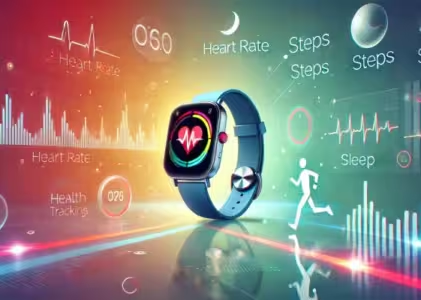Wearable Technology
Over the past few years, the latest wearables(Wearable Technology) have graduated from niche markets to becoming mainstream globally. At the forefront is the smartwatch, which has evolved from a fashion statement into an essential health companion promising insights into workouts, heart health, sleep, body temperature, and menstrual cycles.
But as wearable technology holds so much promise, it also opens up critical questions: How accurate is the data? Can it really impact health decisions? Most importantly, how can parents and educators weave this technology into their everyday lives? Let’s dive into these questions to understand the future of wearable health tracking.
Why Wearable Technology Is Growing
It is no accident that wearables are so popular today. Wearables answer the growing demand for personal health awareness in today’s hectic world. For educators and parents playing multiple roles, wearables help them care for themselves and track their wellness conveniently.
- Fitness on the Go: The Apple Watch and Fitbit provide tracking functions that include steps, calories burned, and active minutes to attain fitness goals.
- Heart Health Awareness: Continuous heart rate monitoring, even to electrocardiogram capabilities, enables users to monitor their cardiovascular health.
- Enhanced Sleep Hygiene: Smartwatches analyze sleep stages for actionable tips to improve rest and recovery.
- Reproductive Health Insights: Menstrual cycle tracking, a feature in many devices, is a game-changer in women’s health.
These features make health management simple and well-being more accessible for busy people.
The Roadblocks to Seamless Integration
However, despite these remarkable capabilities, there are a considerable number of challenges that wearables have to become central in healthcare.
Lack of Accuracy
Wearables are getting better, but not as accurate as clinical-grade equipment. For example, whereas a smartwatch is good at providing overall heart rate trends, it mostly struggles to track accurately during vigorous exercise.
Privacy and Security
Wearables are also going to continue gathering a lot of sensitive information if the security is not robust and is always vulnerable to breaches and other ethical uses. Most providers are sceptical of using the data provided by wearables because standards remain inconsistent. A lack of seamless integration between devices and medical systems adds to the complication.
Pro Tip: Consider insights from a wearable device as additional to professional medical advice, not a replacement.
Actionable Tips to Make the Most of Wearable Technology
Following are a few ways you can get the most out of your wearable device:
- Set Intentional Goals: Choose what you want: sleep better, deal with stress, or even be more active.
- Identify Trends: More than spot, single readings, it’s the sustained trends that will paint a fuller picture of your health over time.
- Share Data with Professionals: A healthcare expert can put findings in context when a wearable flags something as atypical.
- Introduce Kids to Wearables: Parents will love kick-starting kids’ active lifestyles and improved sleeping patterns using basic wearables.
Health Tracking for All: Real-World Applications
Wearable technology isn’t just for individual use; it’s finding applications in families, classrooms, and beyond.
- For Parents: Smartwatches can help track sleep schedules so that children are well-rested for school.
- For Educators: The wearables can monitor the stress of the student and even let them compete in wellness challenges. For example, having a step-count competition has been able to make children more active at school.
These small changes can add up to significant improvements in family and community health.
Frequently Asked Questions about Wearable Technology
Can wearables be trusted in monitoring health?
They are great for spotting trends and helping develop healthy habits, but they are not yet a replacement for professional medical devices.
How can educators use wearables?
Teachers can track stress, monitor activity levels, or create a classroom fitness challenge to get students up and moving to live healthier lifestyles.
Is wearable technology safe for children?
A: Yes, it can be, if you pick and choose carefully. For simple basic fitness trackers inspire kids to move more and develop good sleep habits but it is all in the settings.
Next Steps: How to Join the Wearable Tech Revolution
If you are ready to dive into wearable technology, here is what you can do:
- If you’re looking for devices to purchase, popular models include Fitbit, Apple Watch, and Garmin—but see which one fits your needs.
- Educate yourself about data privacy to take an active role in safeguarding your health information.
- Stay on par with the latest developments in emerging wearable technology and its implications for health care.
Wearable technology revolutionizes how we think about health; it makes wellness more personalized and accessible. There are still lots of challenges regarding data integration and the accuracy of results, but the potential of such devices is undeniable. In any case, wearable technology is a great opportunity to make health a priority in daily life for parents, educators, and inquisitive minds in general.
Next Steps and Resources
If you’re intrigued by wearable tech and its potential, here’s how to dive deeper:
- Explore leading smartwatch brands for your health needs.
- Read guides on data privacy to ensure your information stays secure.
- Watch for emerging trends like wearable integration with telemedicine platforms.

